Calendar systems used throughout the world
The civil calendar is officially used within a nation for civil or administrative purposes. A total of about 90 different calendars existed and still exist. A list of all ever-existing calendars can be found on Wikipedia.
The Gregorian calendar is the most widespread civil calendar and de facto global standard nowadays. One hundred sixty-eight of the world’s nations use the Gregorian calendar as their only calendar.
Although the Gregorian calendar is associated with the Catholic Church, it has been embraced by many nonreligious and non-Christian nations as a matter of convenience.
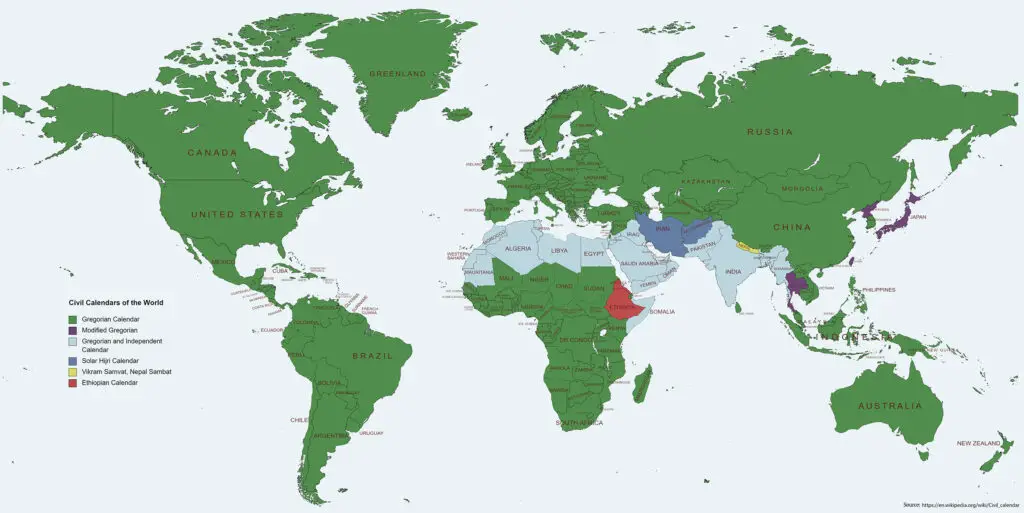
Four nations still use other civil calendars: Afghanistan and Iran (the Solar Hijri calendar), Ethiopia (the Ethiopian calendar), and Nepal (Vikram Samvat and Nepal Sambat).
Four countries utilize an altered version of the Gregorian calendar (with eras different from Anno Domini): Japan (Japanese calendar), North Korea (North Korean Calendar), Taiwan (Minguo calendar), and Thailand (Thai solar calendar). The Anno Domini era is also in use in the former two nations. South Korea earlier used the Korean calendar from 1945 to 1961.
Eighteen nations use another calendar alongside the Gregorian calendar: Algeria (Lunar Hijri calendar), Bangladesh (Bengali calendar), Egypt (Lunar Hijri calendar and Coptic calendar), India (Indian national calendar), Iraq (Lunar Hijri calendar), Israel (Hebrew calendar), Jordan, Libya, Mauritania, Morocco (Lunar Hijri calendar), Myanmar (Burmese calendar), Oman, Pakistan, Saudi Arabia, Somalia, Tunisia, United Arab Emirates, and Yemen (Lunar Hijri calendar).
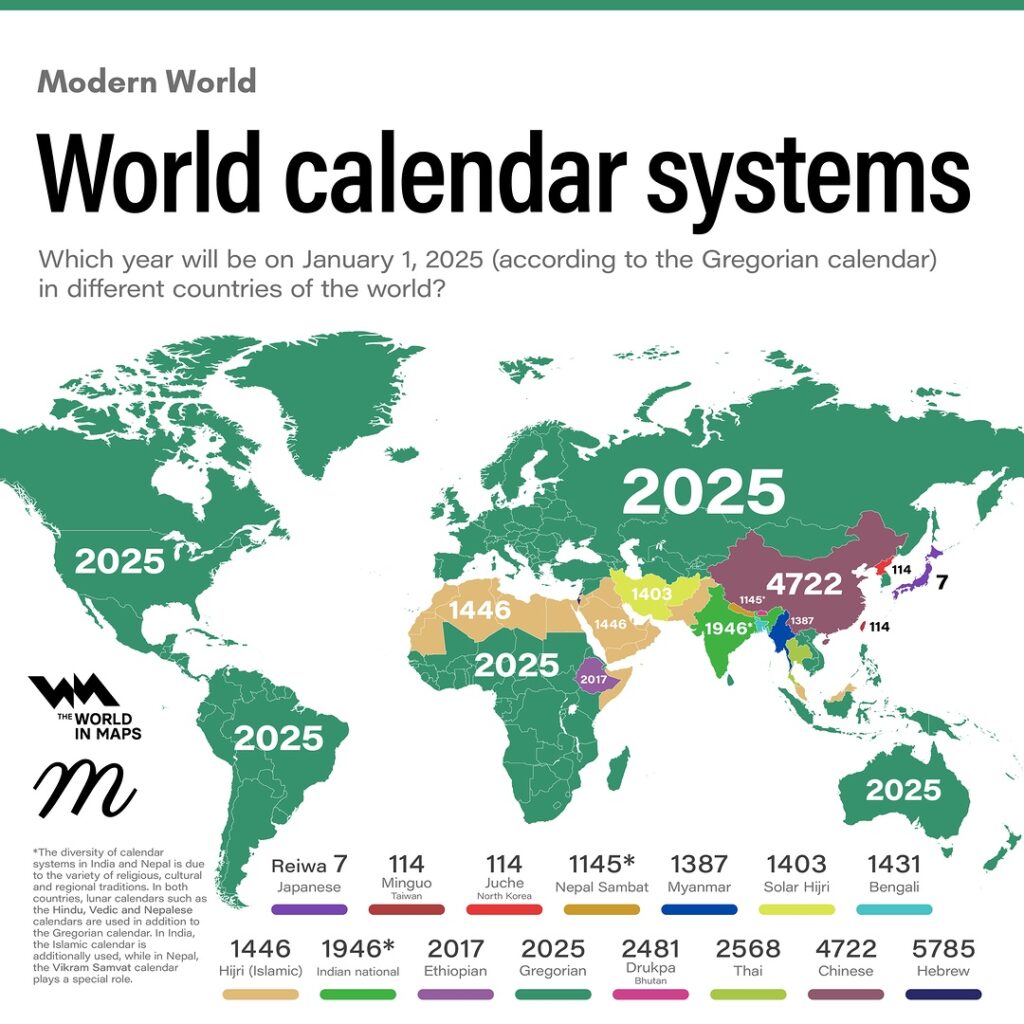
Japanese calendar types have incorporated a range of official and unofficial systems. Nowadays, Japan operates the Gregorian calendar together with year designations declaring the year of the reign of the current Emperor. Reiwa is the present era of Japan’s official calendar. It began on 1 May 2019, when Emperor Akihito’s elder son, Naruhito, ascended the throne as the 126th Emperor of Japan.
The Minguo calendar (The Republic of China calendar) is used in Taiwan, Penghu, Kinmen, and Matsu. The civil calendar uses 1912, the year of the Republic of China (ROC) foundation in Nanjing, as the first year.
The Juche calendar, named after the Juche doctrine, is the year-numbering system utilized in North Korea. It starts with the birth of Kim Il-sung, the founder of North Korea. His birth year, 1912 in the Gregorian calendar, is named “Juche 1” in the Juche calendar.
Nepal Sambat is the lunisolar calendar operated by the Newari people of Nepal. The Calendar era began on 20 October 879 AD, with 1142 in Nepal Sambat corresponding to the year 2021–2022 AD.
The Burmese calendar is a lunisolar calendar in which the months are based on lunar months and years are based on sidereal years. It is primarily based on an older version of the Hindu calendar.
The Solar Hijri calendar is solar and one of the various ancient Iranian calendars. It starts on the March equinox as defined by astronomical calculation for the Iran Standard Time meridian (52.5°E, UTC+03:30) and has years of 365 or 366 days. It is the current principal calendar of both Iran and Afghanistan.
The Bengali Calendar is a solar calendar operated in the Bengal region of the Indian subcontinent. It has a zero year that starts in the 593/594 common era.
The Hijri calendar, or the Islamic calendar, consists of 12 lunar months in a year of 354 or 355 days. This calendar enumerates the Hijri era, whose epoch was established as the Islamic New Year in 622 CE. During that year, Muhammad and his adherents resettled from Mecca to Medina and founded the first Muslim community, and an event celebrated as the Hijrah.
The Indian national calendar is a solar calendar typically 78 years behind the Gregorian Calendar, except during January to March, when it is behind by 79 years.
The Ethiopian calendar is an ecclesiastical calendar officially used in Ethiopia. The calendar has twelve months of thirty days plus five or six epagomenal days, which comprise a thirteenth month. The Ethiopian months start on the same days as the Coptic calendar, but their names are in Ge’ez. A 6th epagomenal day is added every 4 years, without exception, on 29 August of the Julian calendar, 6 months before the corresponding Julian leap day. Thus the 1st day of the Ethiopian calendar year, 1 Mäskäräm, for years between 1900 and 2099 (inclusive), is usually 11 September (Gregorian). However, it falls on 12 September, years before the Gregorian leap year.
The Gregorian calendar is the calendar used in most regions of the world. It was presented in October 1582 by Pope Gregory XIII as a modification of, and substitute for, the Julian calendar. The main change was to space leap years differently to make the average calendar year 365.2425 days long, more closely corresponding to the 365.2422-day ‘tropical’ or ‘solar’ year determined by our planet’s revolution around the Sun.
Vikram Samvat or Vikrami calendar is a Hindu calendar historically operated in the Indian subcontinent. Vikram Samvat is typically 57 years ahead of Gregorian Calendar, except during January to April, when it is ahead by 56 years.
The Thai lunar calendar is a lunisolar Buddhist calendar that combines solar and lunar calendars for a nominal year of 12 months. An additional day or an extra 30-day month is intercalated at irregular intervals.
The Hebrew calendar is a lunisolar calendar that is the official calendar of the state of Israel and is used worldwide for Jewish religious observance. The Hebrew lunar year is approximately 11 days shorter than the solar year. It uses the 19-year Metonic cycle to align it with the solar year, adding an intercalary month every 2 or 3 years, for a total of 7 times per 19 years. Even with this intercalation, the average Hebrew calendar year is longer by approximately 6 minutes and 40 seconds than the current mean tropical year, so that every 216 years, the Hebrew calendar will fall a day behind the current mean tropical year.



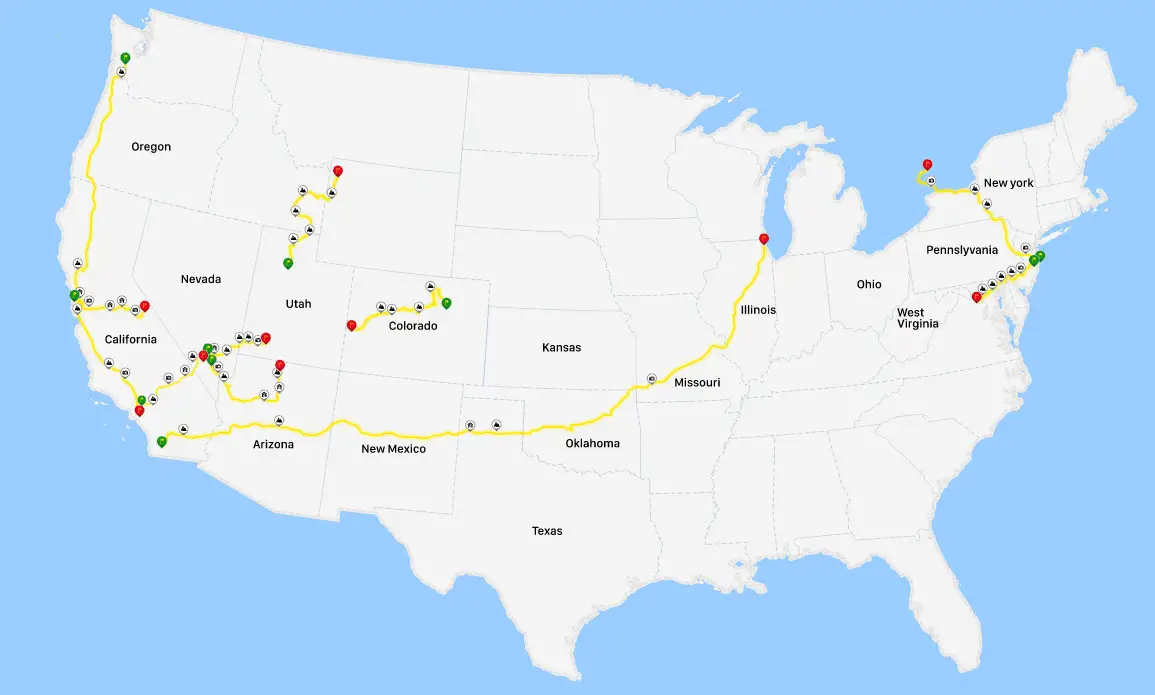
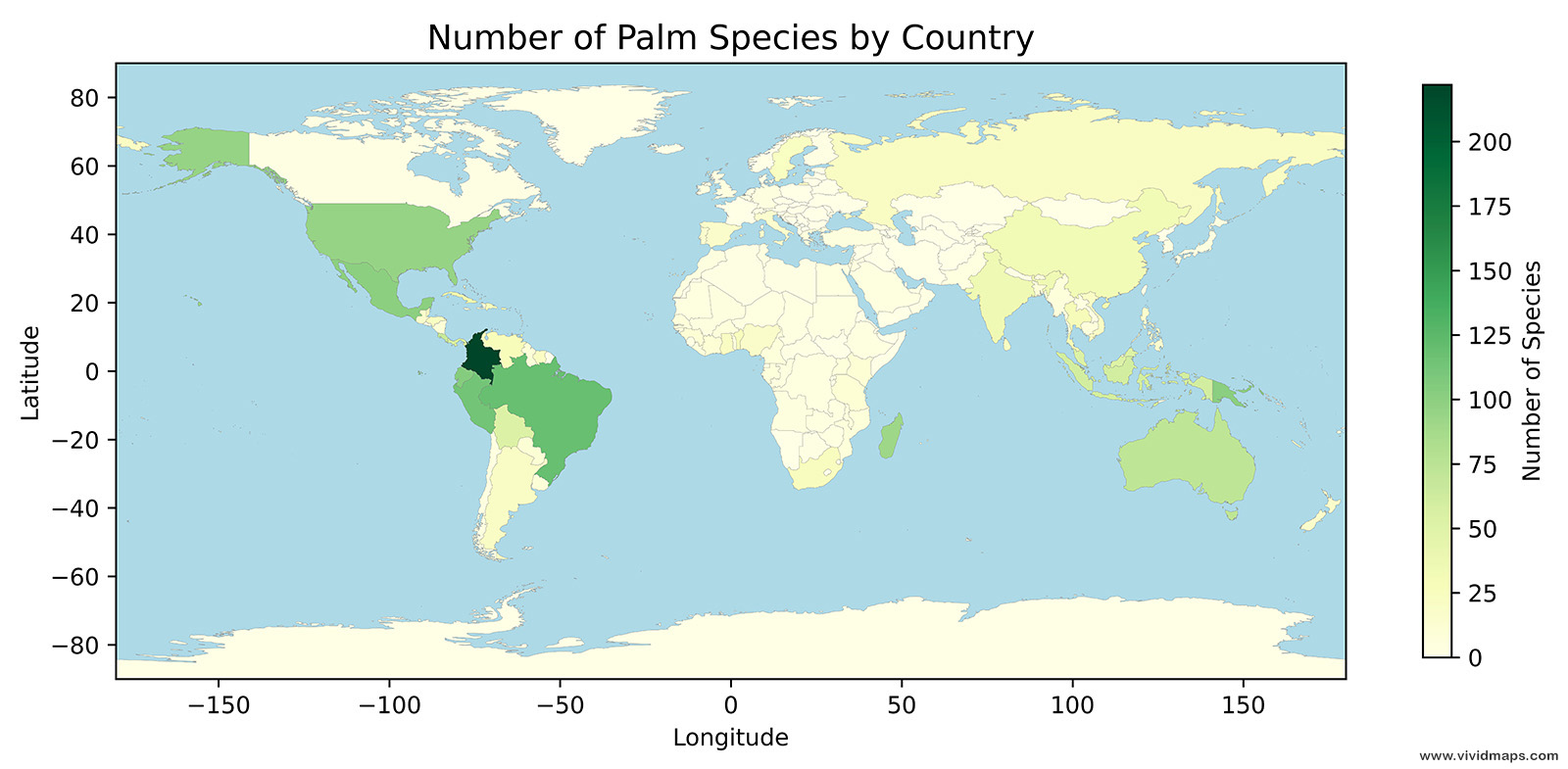
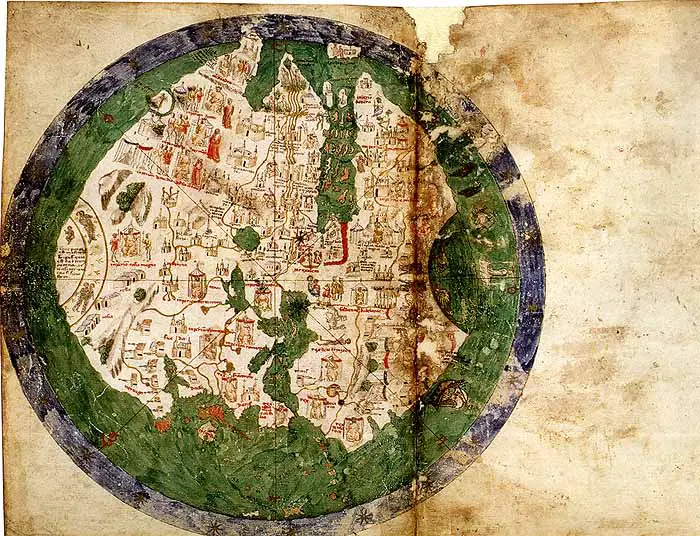



Thank you, Alex! I have been looking for something like this in order to tell people about different calendar systems and what 2023 is in them in order to use on my Instagram story. I will be sure to credit you.
India also has Shalivahan Shak Samvat. Used in Maharashtra predominantly but also in some parts of India. It is currently 1945 of Shalivahan Shak Samvat.
Hope you add this in India map, maybe.
He has it in the map already because there are two years in one country they put it stripped with two colours
I just wanted to mention a common misunderstanding about what you called the Hebrew Calendar being actually The Jewish Babylonian Calendar. Fortunately, The Hebrew Calendar is without names of deities on it to denote the months. (I.e. 1st Month, Day 1, Year). Babylonian is obvious from the names on the current Jewish National Calendar.